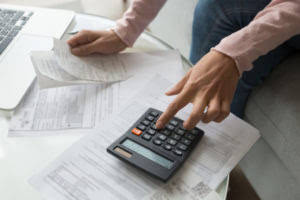
11 Financial may only transact business in those states in which it is registered, or qualifies for an exemption or exclusion from registration requirements. 11 Financial’s website is limited to the dissemination of general information pertaining to its advisory Accounting Periods and Methods services, together with access to additional investment-related information, publications, and links. Consequently, the generally accepted accounting principles (GAAP) require the use of an average number of shares outstanding as the starting point for all denominators. Let there be a Company A that has 100 thousand shares outstanding at the start of the year, i.e., 1 January. Enter each stock transaction that occurred between the beginning and end dates selected at the top of the calculator — in chronological order.
- Some companies’ balance sheets list the common shares outstanding straight out.
- If you find that annoying, select “Unstick” to keep the panel in a stationary position.
- Since private companies are not legally required to report EPS on their income statement, they don’t need to calculate the weighted average number of shares outstanding.
- Company management does not consider these non-GAAP measures in isolation or as an alternative to financial measures determined in accordance with GAAP.
- It means that any additional shares issued as a result of stock dividend or split are assumed to be outstanding since the beginning of the year.
Add the Preferred and Common Stock, Then Subtract the Treasury Shares
- We pro-rated the weighted average number of shares according to their duration.
- E.g., buyback of shares, the new issue of shares, share dividend, stock split, conversion of warrants, etc.
- Understanding how to calculate a weighted average can also be useful to individual investors who want to calculate their cost basis.
- The number of shares of a company outstanding is not constant and may change at various times throughout the year due to a share buyback, new issues, conversion, etc.
- The Weighted Average Shares Outstanding represents a company’s normalized, time-weighted common share count across a specified period of time.
The cost basis refers to the original purchase price of an asset or investment for tax purposes. Investors calculate the cost basis to determine if their investment has been profitable or not, along with any possible taxes they might owe on the investment. The earnings per share calculation for the year would then be calculated as earnings divided by the weighted average number of shares ($200,000/150,000), which is equal to $1.33 per share. Consequently, the treatment of stock dividends and splits is different https://www.facebook.com/BooksTimeInc from the treatment used for issuances of shares in exchange for assets or services.

Stock Splits

Once you’ve located the number of treasury stocks, write it down for your calculations. Companies that have publicly traded stocks in the United States are required to file public financial disclosures to the Securities and Exchange Commission (SEC) which include the company’s balance sheet. You can also find the company’s balance sheet in its annual report, which can often be found on the company’s website.
How Do Stock Buybacks Influence Shares Outstanding?

The number of outstanding shares can also change if other financial instruments are turned into shares. An example of this is when employees of the shares outstanding formula company convert their employee stock options (ESO) into shares. To achieve a proper and fair view of the changes in the number of shares and for the calculation of EPS, the method of weighted average shares outstanding is used.
- Non-GAAP gross profit represents gross profit adjusted for stock-based compensation expense and other special items as identified by management and described elsewhere in this press release.
- As noted above, outstanding shares are used to determine very important financial metrics for public companies.
- Let us see how the weighted average number of shares outstanding will change.
- The number of shares outstanding in a company will often change due to a company issuing new shares, repurchasing shares, and retiring existing shares.
- Thus, while calculating Earnings per Share, the Company needs to find the weighted average number of shares outstanding.
Shares outstanding include shares owned by retail and institutional investors and restricted shares held by company officials and employees. Changes in the composition of the holdings do not change the number of total shares outstanding. New share issues, the exercise of stock options, conversion, and cancellations through buybacks will change the figure. The number of shares of a company outstanding is not constant and may change at various times throughout the year, due to a share buyback, new issues, conversion, etc. For example, you can calculate a company’s earnings per share (EPS), a common metric used to compare companies’ performances.
